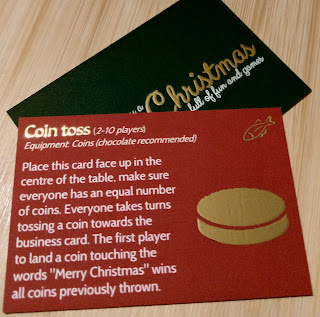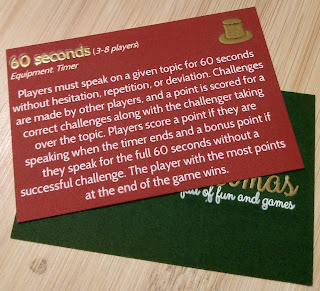Bidder Beware! - WIP party card game
Bidder Beware! is a light party style card game of bidding and bluffing. The aim is to maximise your profit by buying property at auction. But all properties have secrets and everyone is trying to get a bargain whilst avoiding the money pits. How good are you at reading your friends, do they want that property or are they bluffing? What do they know, is it a hidden gem or a disaster!
I started making this game thinking about how much fun the bidding and bluffing can be in various games. I wanted to make something for my friends that had more of a theme then a game of poker but could be played in full quicker then a larger game (like Sheriff of Nottingham).
The current version of the game is played with a deck of 17 property cards and 47 modifier cards. The only other thing you need is a way to keep track of your money. Pencil and paper works fine but I have had fun using some tokens, like poker chips to make the bidding process more tactile. I have piloted and blind piloted the game with between 3-6 people.
Rules
(40 second video rule summary)
Set up
Shuffle the property and modifier decks.
Each player starts with £1,000,000.
Lay 1 property card per player face up in the centre of the table.
Deal 3 modifier cards to each player.
Part 1: Placing modifiers
Take turns placing a modifier under any of the laid out properties. Repeat until all modifiers used.
As you place a modifier under a property players can say anything. They can tell the truth or lie. This is a great time to bluff and double bluff about what you are doing.
After all modifiers are placed move onto the auction phase.
Part 2: The auction
Work from the property with the lowest list price up to the highest value property.
Starting price is half the property list price. Bids can only be placed in increments of £10,000.
A player wins a property when all other players declare themselves out of the running.
It is possible that no one bids on a property and it is unsold.
Players immediately subtract the money spent from their reserves.
Players do not need to buy a property each round or they can purchase multiple properties in a round.
Part 3: The reveal
After all properties are sold, reveal the hidden modifiers, starting with the property with the lowest list price.
Players immediately sell the property to the bank based on the list price and modifiers. Players may make a profit or a loss.
I suggest you play 3 rounds.
The player with the most money at the end wins.
The development process
The prompt for this game was to make a game about bidding and bluffing. Once I started thinking about the game's aim I quickly thought of the real estate listings in high street windows and how they only ever show a snapshot. You never know a property's real value until you see the bits that are hidden. This formed the basic principle of the game and once I had the theme I thought I could give it a go to make up a rough draft of what I was thinking.
Making educational resources for work has conditioned me to only ever use public domain graphics. I started looking at the kind of images available on sites like pixabay. I found a huge amount of images of buildings and was able to find images for every type of property I was thinking about and every modifier as well. Sometimes, I found a brilliant picture of a roof collapsed or a pile of gold coins and that would inspire an extra card.
My first draft had only 10 properties and 30 modifiers but it was enough to test with some friends. This was an encouraging step, it made people laugh and they wanted to play more then 1 round. But it also showed the need for some specific rules to be added, such as bids must be in a minimum of £10,000 increments to keep the auction phrase from dragging on too much. Also, keeping track of their money was a challenge for some players who don't enjoy maths. In future pilots of the game I experimented with first paper money (which people didn't like) and in the end settled on small tokens. I made some out of pewter but I think a final version would use cardboard chits.
After, some personal piloting I expanded the card set to the current total of 17 property cards and 37 modifier cards. I then had half a dozen test deck printed and I had people blind/unguided test the game. I was not very organised in how I did this, I didn't get written feedback. I just asked people what they thought in an unstructured way. This was a mistake and in the future I will send out specific feedback forms with any unguided testing. The rules can fit on 4 card faces so when I had a test edition printed for piloting I was able to keep components down to just 66 cards. But I think a short rules leaflet might work better in the future.
Next steps
I did consider if I wanted to try and self-publish the game. I even experimented with a print on demand service, but when the UK company shut down their print on demand service that avenue shut. Honestly, I am not sure the print on demand game model works very well.
I am now planning on pitching the game to a few game companies. As this is my first attempt at doing this, I am sure I will make many mistakes but that is all helpful in my learning process.







Comments
Post a Comment